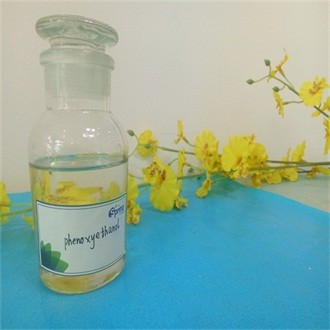At present, most of the chemical preservatives used in our market are benzoic acid and its sodium salt, sorbic acid and its potassium salt, propionic acid and its salt, p-hydroxybenzoic acid esters (nipagin ester), dehydroacetic acid and its sodium salt, sodium lactate, fumaric acid, etc.
1. Benzoic acid and its sodium salt
Benzoic acid and its sodium salt is one of the most commonly used preservatives in China's food processing industry, mainly used for preserving liquid foods such as beverages (e.g. soft drinks, fruit juices, soy sauce, canned food, wine, etc.). Benzoic acid is lipophilic and easily penetrates through the cell membrane and enters the cell body, thus interfering with the permeability of the cell membrane of microorganisms and inhibiting the absorption of amino acids by the cell membrane. The benzoic acid molecule that enters into the cell body, ionizes the alkaline material in the cell, and can inhibit the activity of the cell respiratory enzyme system, and has a strong role in preventing the acetyl coenzyme A condensation reaction, so as to play a preservative effect on food.
2 Sorbic acid and its potassium salt
Sorbic acid (potassium sorbate) is the most used preservative and is used in most countries. Sorbic acid is unsaturated fatty acid, its inhibition mechanism is to use its own double bond and microbial cells in the enzyme of the sulfhydryl group combined to form a covalent bond, so that it loses activity and destroy the enzyme system. In addition, sorbic acid can also interfere with the transfer function, such as the transfer of oxygen by cytochrome C, and the function of cell membrane energy transfer, inhibit the proliferation of microorganisms, so as to achieve the purpose of corrosion.
3 Propionic acid and its salt
Propionic acid is a mono-acid, colorless oily liquid. It is to inhibit microbial synthesis of β-alanine and antibacterial effect. Propionic acid salts are mainly sodium propionate and calcium propionate, they have the same preservative mechanism, are transformed into propionic acid in the body, monomeric propionic acid molecules can form a high osmotic pressure outside the mold cells, so that the mold cell dehydration, loss of reproduction, and can also penetrate the mold cell wall, inhibit intracellular activity.
4 paraben esters (nipagin ester)
Paraben esters are methyl paraben, ethyl paraben, propyl paraben, isopropyl paraben, butyl paraben, isobutyl paraben, heptyl paraben, etc. The inhibition mechanism of p-hydroxybenzoic acid esters is: the microbial cell respiratory system and electron transfer enzyme system activity is inhibited, and can destroy the structure of microbial cell membrane, so as to play the role of antiseptic.
5 Dehydroacetic acid and its sodium salt
Dehydroacetic acid, molecular formula C8H8O4 it and its sodium salt are white or light yellow crystalline powder, has a strong antibacterial ability, especially strong antibacterial ability of mold and yeast. It is an acidic preservative and basically ineffective for neutral foods. It is stable to light and heat, degrades to acetic acid in aqueous solution, and is non-toxic to human body. It is a broad-spectrum preservative and is widely used for preserving meat, fish, vegetables, fruits, beverages, pastries, etc.
6 Sodium lactate
Colorless or slightly yellow transparent liquid, odorless, slightly salty and bitter, miscible in water, ethanol, glycerin. The general concentration is 60%-80%, and the maximum use limit is 30g/KG for 60% concentration... Sodium lactate is a new type of preservative and preservation agent, mainly applied to meat and poultry products, which has a strong inhibitory effect on meat food bacteria. It is mainly applied to roast meat, ham, sausage, chicken, duck and poultry products and sauce and brine products. Reference formula for preserving freshness in meat products: sodium lactate: 2%, sodium dehydroacetate 0.2%.
7 Dimethyl fumarate
It is a new type of anti-mold preservative that is vigorously developed at home and abroad, which can inhibit more than 30 kinds of molds and yeasts, and its antibacterial performance is not affected by pH value, with the advantages of high efficiency and broad spectrum, high safety and low price. Its comprehensive antibacterial and antiseptic performance is superior, with strong biological activity. It has fumigant properties due to sublimation, so it has a dual role of contact sterilization and fumigation sterilization. Low toxicity, into the human body quickly into the normal components of human metabolism fumaric acid, the application of good repeatability.
Post time: Apr-01-2022


